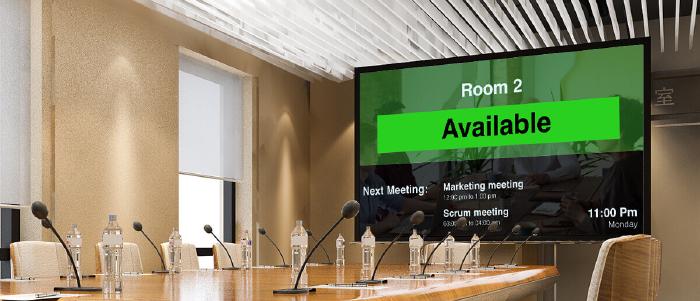
Dec 29 2021
10 min read

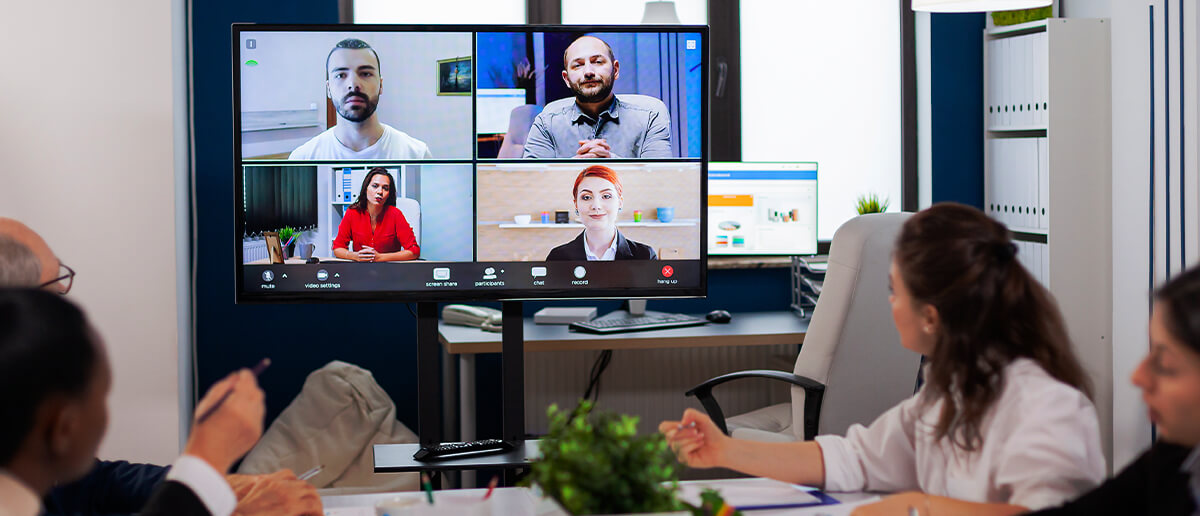
Dec
When it comes to doing business, effective workforce communication is essential. According to research conducted by Hart Research Associates, 93% of organizations value good communication skills over a college graduate’s degree.
Most of the time, workplace communication is a mix of several approaches; it can range from written instructions to face-to-face interactions to even peering over your desk to converse with co-workers. However, contact with co-workers is no longer limited to your office spaces and is now conducted globally.
Many firms find that running a business on a global scale brings unique challenges and opportunities in connecting with a geographically scattered workforce. How do you keep your staff informed and involved when dealing with language obstacles and cultural variations, as well as time zones and legal issues?
True that it’s easier than ever to communicate worldwide because of platforms like Slack, Zoom, Google Meet, and Microsoft Teams. But managing global internal communication in this open economy extends way beyond messaging and video conferencing. It can be challenging and complex, from engaging distant workers to simultaneously sending messages to all locations.
Navigating internal communication in a global business landscape can be problematic since every country has its own government regulations, laws, cultures, languages, currency, time zones, and inflation rate.
Here are the four major obstacles that employees in a global workforce face:
In a global workforce communication strategy, it’s crucial to think about the languages spoken in the nations where you want to expand. According to HR Magazine, a poll of 4,000 employees found that deciphering unclear guidelines cost them 40 minutes of productivity every day.
Is it possible to translate your product messaging into another language? It’s also important to think about the languages spoken by your company’s employees in overseas locations. Investing in interpreters, either human or tech-based, might help you keep your business running smoothly.
There are bound to be differences in civilization as enormous as ours. Some of these distinctions are obvious, such as linguistic obstacles. Many, on the other hand, are considerably more subtle.
For instance, even in business, it is impolite to say “No” in Japan. So, when communicating with a Japanese co-worker, American & European employees may find it surprising or amusing if the talk drags on. But, finishing a conversation abruptly will be deemed disrespectful.
Each country has its unique language makeup and its own distinct culture or blends of civilizations. Holidays, arts, rituals, meals, and social conventions are all part of the culture for a given group of people. Therefore, cultural differences can often result in workplace bullying or internal vexation within an international labor force.
Global internal communications are impacted by time zones in various ways, including interacting with other global enterprises, organizing work around travel, and collaborating with your remote workforce.
Live cooperation is the most challenging obstacle for any business that has a workforce spread across several time zones. It can be aggravating when the best team member for the task isn’t awake yet and won’t be for hours, and you’re anxious for some ongoing cooperation of quick questions, responses, and brainstorming, or fast shared problem-solving.
Politics, policies, regulations, and cross-national ties all impact business. Since these ties can be complex, you must keep up with news from the countries where you do business. Taxes, labor rules, raw material costs, transportation infrastructure, educational systems, and other factors can all be influenced by political actions.
There are several tools to aid in effective communication in a global workplace, but when we talk about digital signage for internal communication, we usually relate its applications with the broadcast of pre-defined content like advertising videos or branding messages. But surprisingly, a worldwide network of screens can do much more than that for multinational businesses.
Digital signage can bring your global workforce closer by opening up different avenues for internal communication, collaborations and interactions. Here are some ways digital displays can address the aforesaid challenges in trans-national workforce communications.
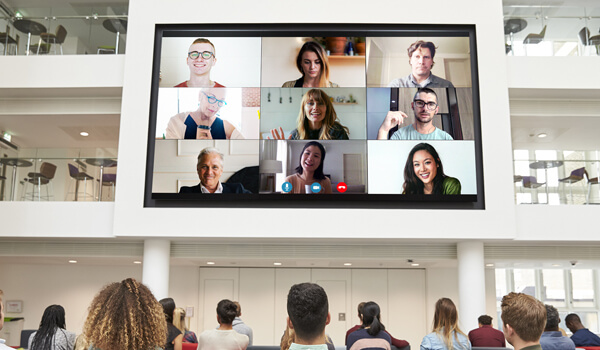
Many multinational organizations have meeting rooms with large video walls that can fit hundreds of employees participating remotely in a virtual gathering. Companies like Google, Microsoft, and Cisco regularly host pan-international summits & symposiums to cement cross-border work cultures. Only a highly scalable screen management software can render the speed and network efficiency to support these mega virtual meet-ups.
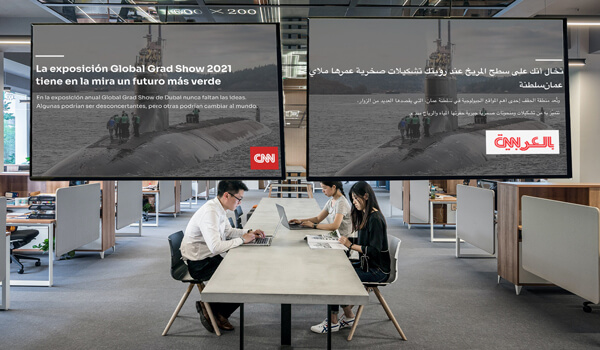
Not everyone working in a global workforce is proficient in English. One of the ways multinational corporations can embrace diversity is by eliminating the linguistic gap. Showing corporate media like training videos or company announcements in multiple languages can foster an inclusive culture in the workplace.
In global, multicultural organizations, simply expecting all employees to speak one common language, such as English, marginalizes the potential impact of international talent and leaves monolingual staff ill-equipped to help the organization compete effectively in a globalized environment.
- Rosetta Stone Report
Many digital signage screens in corporate offices are always tuned in to global news channels. But, why do we always show the news in the English language?
Did you know that the vast majority of international news channels also have local news apps? For example, CNN news is also available in Spanish & Arabic languages. The BBC too has a dedicated Spanish app called BBC Mundo. The true meaning of managing a global workforce is making your peers from the other side of the globe feel welcome in a foreign land.
Check This Out: The Pickcel app store has 60+ free apps including international & regional news apps. Custom apps are also available on request.
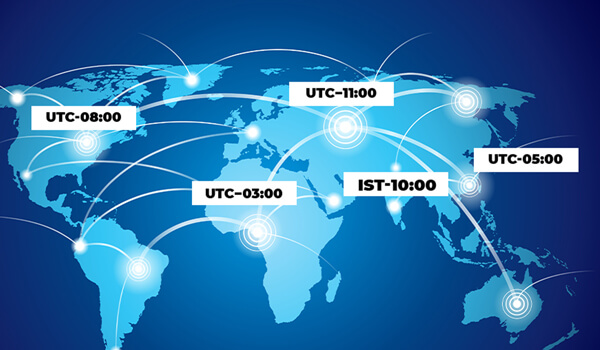
Live streams and broadcasts displayed in different time zones in a one-to-many environment, similar to a television broadcast, are cases of asynchronous communications. A content management software for your screen network will allow content scheduling. This enables the organization to broadcast the same messages in different time zones based on the discrete working hours.

Various internal office systems, including project dashboards, sales dashboards, message platforms, and holiday schedules, can be combined with a centralized software dashboard. Headquarters monitoring the performance of various regional offices can use signage displays to show KPIs and comparison metrics.
Note: Pickcel offers tons of API integrations to source and channelize data from third-party servers to digital screens.
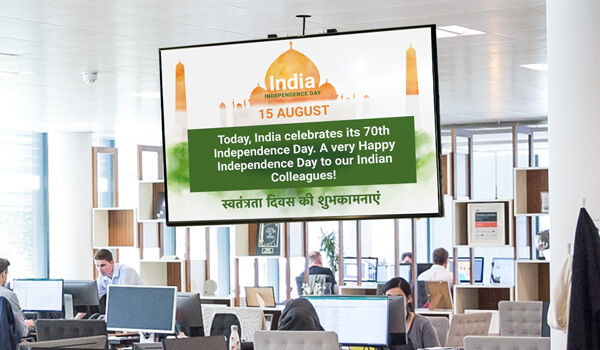
A report by UN DESA brought forward the statistics that with 18 million expatriate workers, Indians comprise the largest diaspora population of the world. Many Chinese, Spanish & Japanese people also migrate out of their motherland for job postings.
Therefore, it is safe to say that a large section of any global workforce lives outside the nations they call home. As a leader, you can create a welcoming environment by celebrating different cultures, national days, and festivals that may not mean much to other employees but will surely mean a lot to the non-citizen staff.
Instead of branding your screens with “we embrace all cultures”, showing a simple message celebrating another country’s Independence Day or a minority culture’s festival will be genuinely appreciated by your international employees.
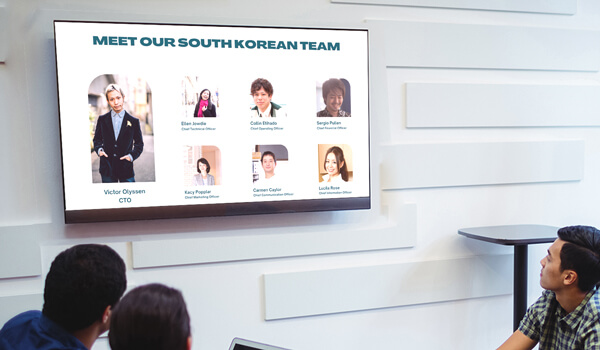
We have all grown accustomed to communicating with overseas counterparts over the past decade. Many of us have never seen how our overseas colleagues look. As management, your job is not done unless you bridge the gap between these globally-separated-yet-connected members of a team.
With apps like Meet the Team, you can display employee images, designations, and other information on your office digital signage displays. Showing photographs of team members can make the bond stronger within a global workplace, and your employees feel personally connected. It results in reduced friction during work.
To effectively communicate with a global workforce, employers need to consider not only the frequency of communication but also the quality of the information being shared. This is particularly important when you want employees to retain important information. By using eye-catching and engaging digital signage content, employers can capture employees’ attention and ensure that important messages are received and understood.
Pickcel’s digital signage solution for corporate offices is built to bring the world closer with the help of a network of connected screens. Our solution is scalable at multinational level. Smooth and seamless inter-office communication is no longer an unreasonable ambition.

Take complete control of what you show on your digital signage & how you show it.
Start Free Trial Schedule My Demo
Dec 29 2021
10 min read

Dec 9 2021
7 min read

Apr 12 2021
10 min read

Mar 2 2021
4 min read